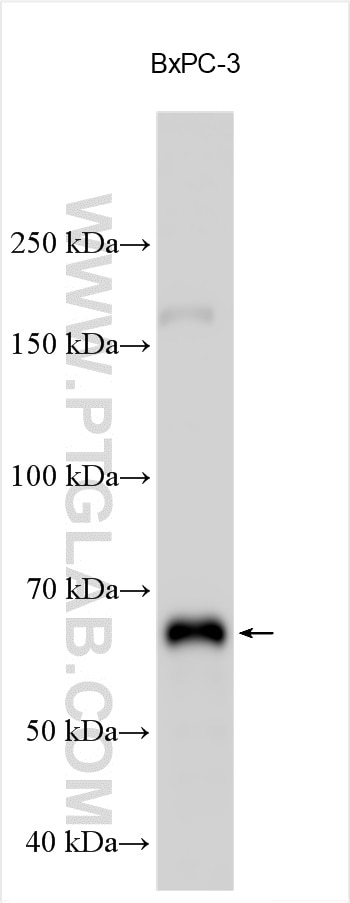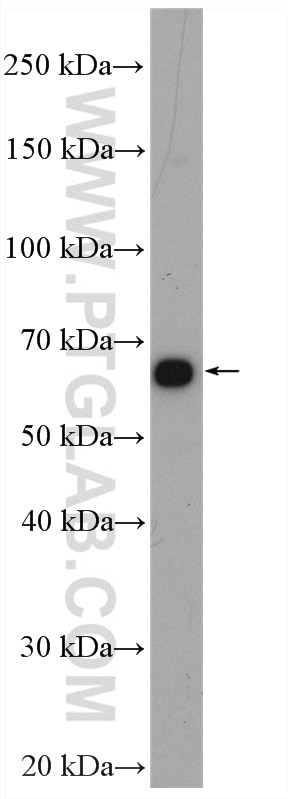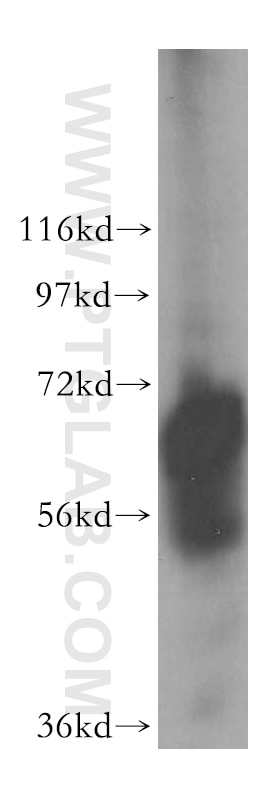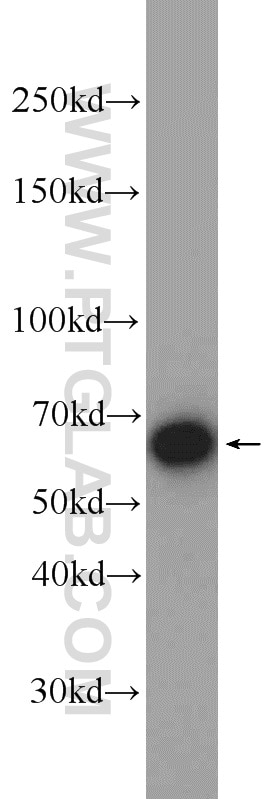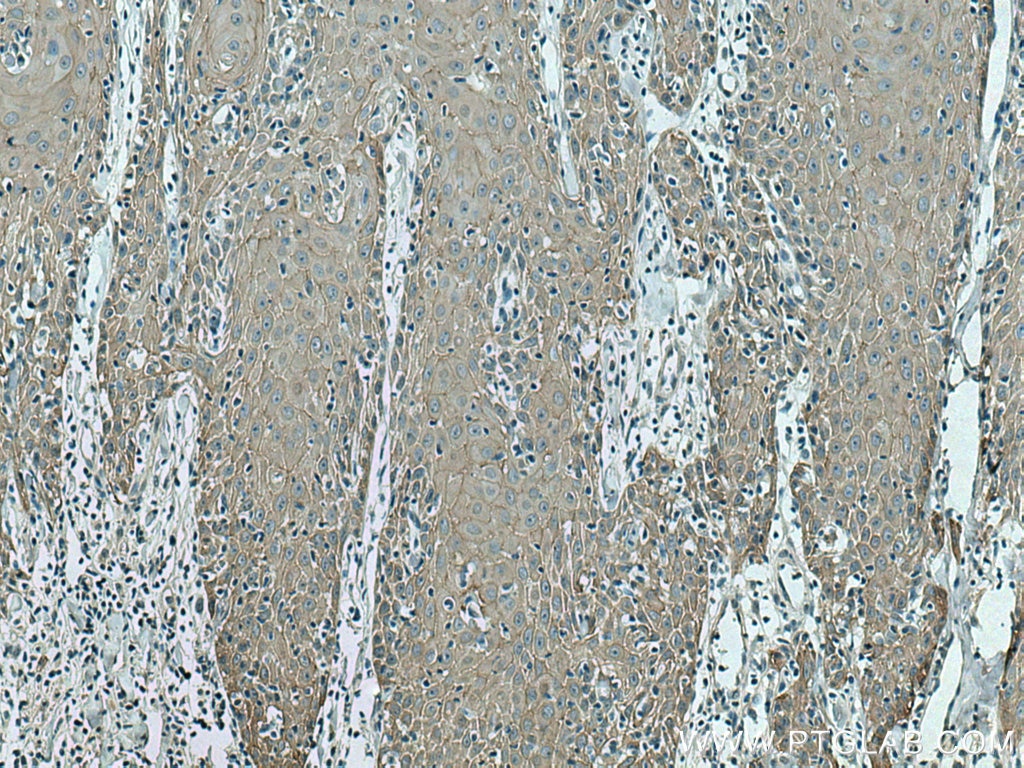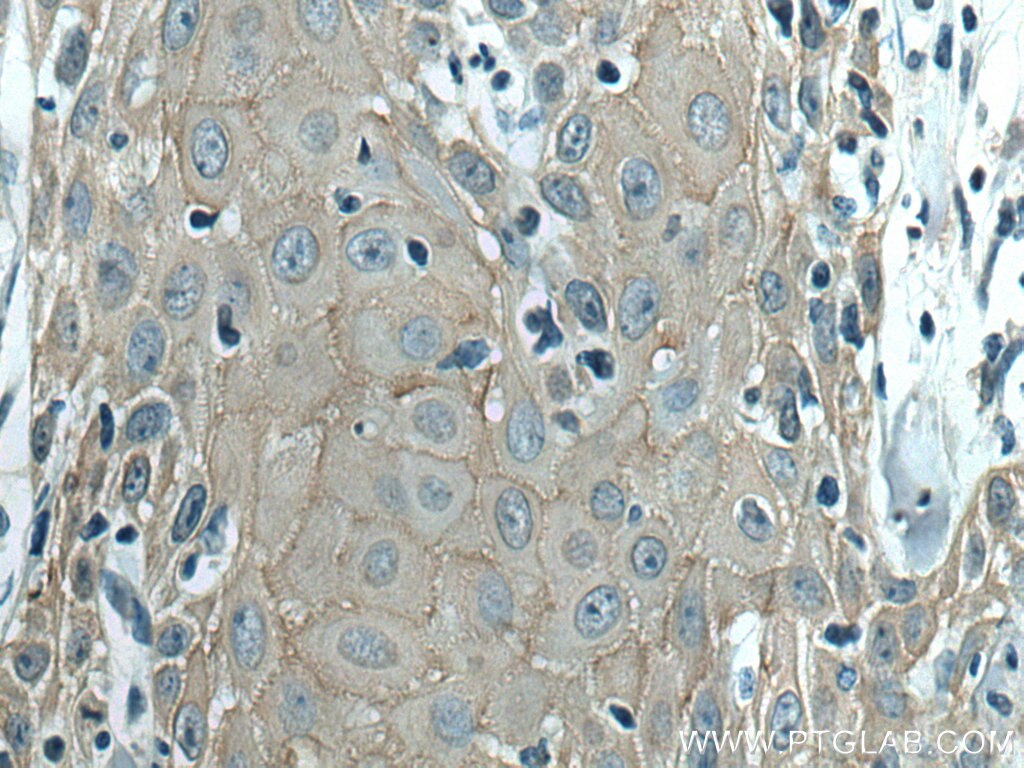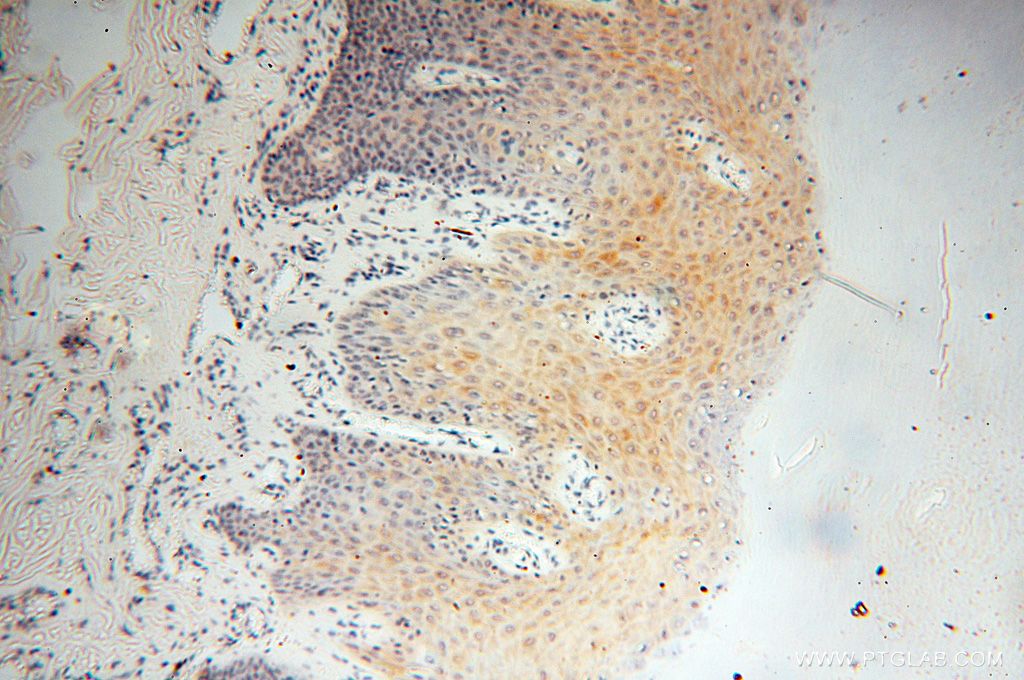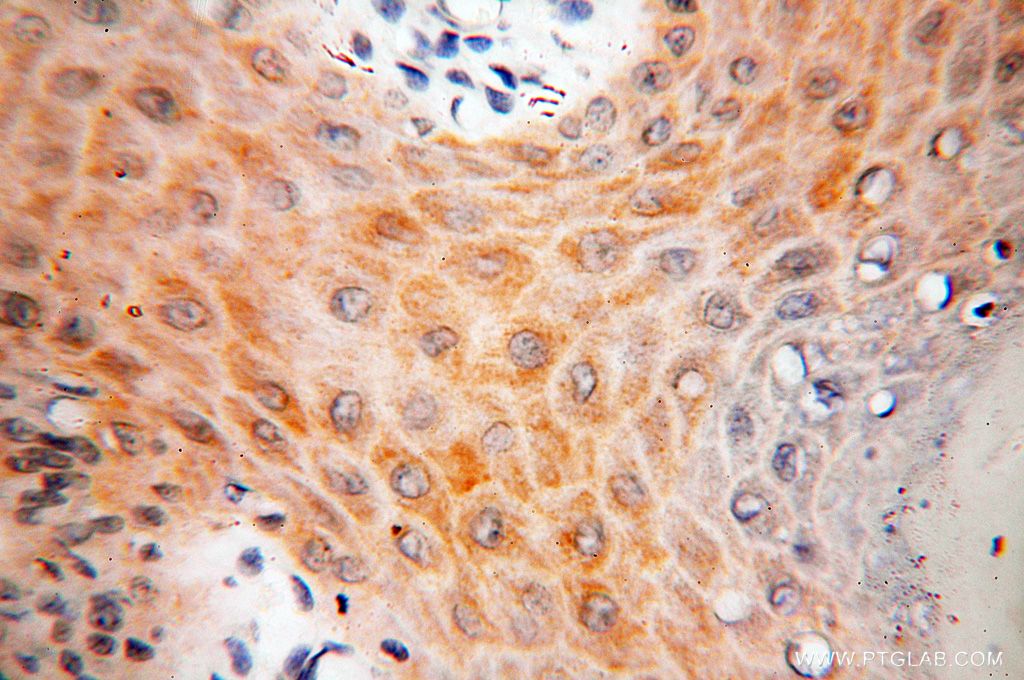- Phare
- Validé par KD/KO
Anticorps Polyclonal de lapin anti-TRIM29
TRIM29 Polyclonal Antibody for WB, IHC, ELISA
Hôte / Isotype
Lapin / IgG
Réactivité testée
Humain et plus (1)
Applications
WB, IHC, IF, IP, ELISA
Conjugaison
Non conjugué
N° de cat : 17542-1-AP
Synonymes
Galerie de données de validation
Applications testées
| Résultats positifs en WB | cellules BxPC-3, cellules A431, cellules BGC-823 |
| Résultats positifs en IHC | tissu de cancer de la peau humain, tissu cutané humain il est suggéré de démasquer l'antigène avec un tampon de TE buffer pH 9.0; (*) À défaut, 'le démasquage de l'antigène peut être 'effectué avec un tampon citrate pH 6,0. |
Dilution recommandée
| Application | Dilution |
|---|---|
| Western Blot (WB) | WB : 1:2000-1:20000 |
| Immunohistochimie (IHC) | IHC : 1:50-1:500 |
| It is recommended that this reagent should be titrated in each testing system to obtain optimal results. | |
| Sample-dependent, check data in validation data gallery | |
Applications publiées
| KD/KO | See 3 publications below |
| WB | See 10 publications below |
| IHC | See 3 publications below |
| IF | See 2 publications below |
| IP | See 1 publications below |
Informations sur le produit
17542-1-AP cible TRIM29 dans les applications de WB, IHC, IF, IP, ELISA et montre une réactivité avec des échantillons Humain
| Réactivité | Humain |
| Réactivité citée | Humain, souris |
| Hôte / Isotype | Lapin / IgG |
| Clonalité | Polyclonal |
| Type | Anticorps |
| Immunogène | TRIM29 Protéine recombinante Ag11600 |
| Nom complet | tripartite motif-containing 29 |
| Masse moléculaire calculée | 588 aa, 66 kDa |
| Poids moléculaire observé | 65 kDa |
| Numéro d’acquisition GenBank | BC017352 |
| Symbole du gène | TRIM29 |
| Identification du gène (NCBI) | 23650 |
| Conjugaison | Non conjugué |
| Forme | Liquide |
| Méthode de purification | Purification par affinité contre l'antigène |
| Tampon de stockage | PBS with 0.02% sodium azide and 50% glycerol |
| Conditions de stockage | Stocker à -20°C. Stable pendant un an après l'expédition. L'aliquotage n'est pas nécessaire pour le stockage à -20oC Les 20ul contiennent 0,1% de BSA. |
Informations générales
TRIM29(Tripartite motif-containing protein 29) is also named as ATDC( Ataxia telangiectasia group D-associated protein). ATDC protein physically interacted with the intermediate filament protein vimentin, a protein kinase C substrate and colocalizing protein, and with an inhibitor of protein kinase C, PKCI1 (PMID:7644499). Knockdown of TRIM29 in airway epithelial cells enhances type I interferon production, and in human nasopharyngeal carcinoma cells results in almost complete Epstein-Barr virus clearance. TRIM29 is also highly induced by cytosolic double-stranded DNA in myeloid dendritic cells (PMID: 29038422). Western detected both full-length TRIM29 (65 kDa) and a truncated variant of TRIM29 with a molecular weight of about 50 kDa (PMID: 26095369).
Protocole
| Product Specific Protocols | |
|---|---|
| WB protocol for TRIM29 antibody 17542-1-AP | Download protocol |
| IHC protocol for TRIM29 antibody 17542-1-AP | Download protocol |
| Standard Protocols | |
|---|---|
| Click here to view our Standard Protocols |
Publications
| Species | Application | Title |
|---|---|---|
Mol Cancer CircIL4R activates the PI3K/AKT signaling pathway via the miR-761/TRIM29/PHLPP1 axis and promotes proliferation and metastasis in colorectal cancer.
| ||
Oncogenesis Galectin-9 promotes a suppressive microenvironment in human cancer by enhancing STING degradation. | ||
iScience Alternative transcribed 3' isoform of long non-coding RNA Malat1 inhibits mouse retinal oxidative stress | ||
PLoS One Ataxia-Telangiectasia Group D Complementing Gene (ATDC) Promotes Lung Cancer Cell Proliferation by Activating NF-κB Pathway. | ||
Cancer Sci Role of deltaNp63(pos) CD44v(pos) cells in the development of N-nitroso-tris-chloroethylurea-induced peripheral-type mouse lung squamous cell carcinomas. | ||
Cancer Biol Ther iTRAQ-based quantitative proteomic analysis of differentially expressed proteins in chemoresistant nasopharyngeal carcinoma. |
